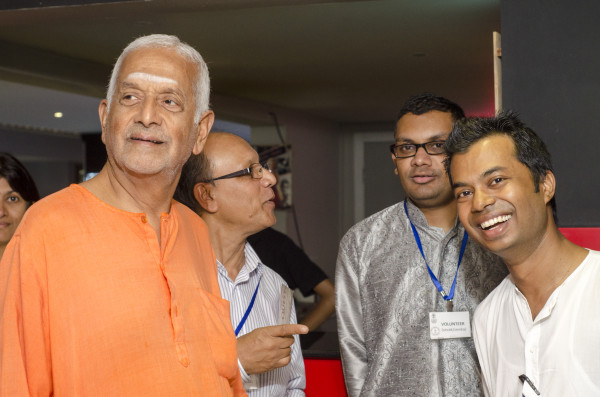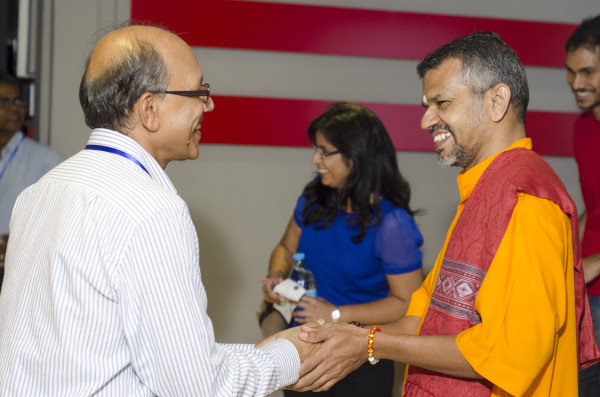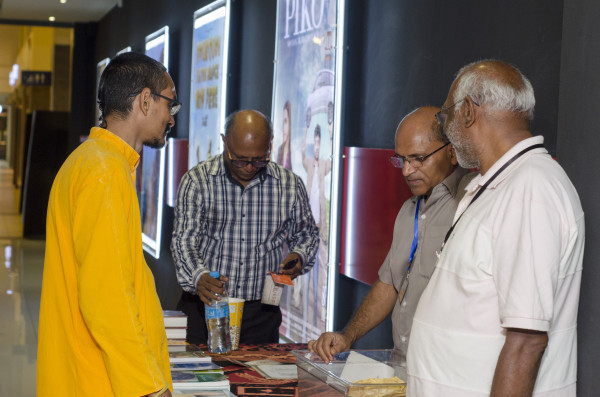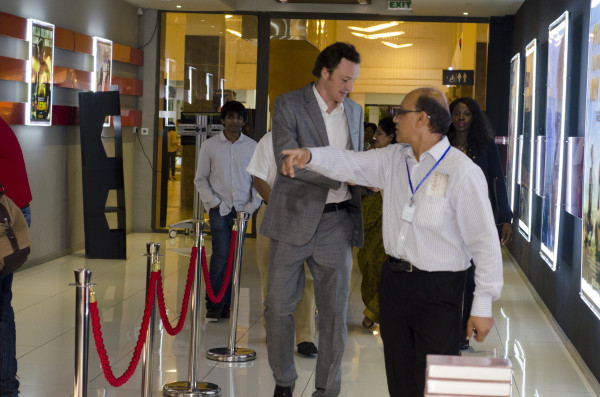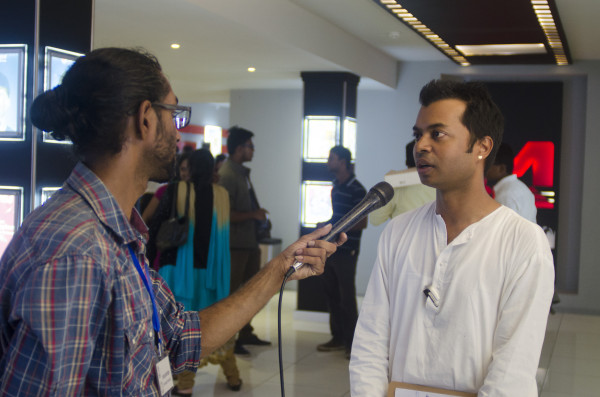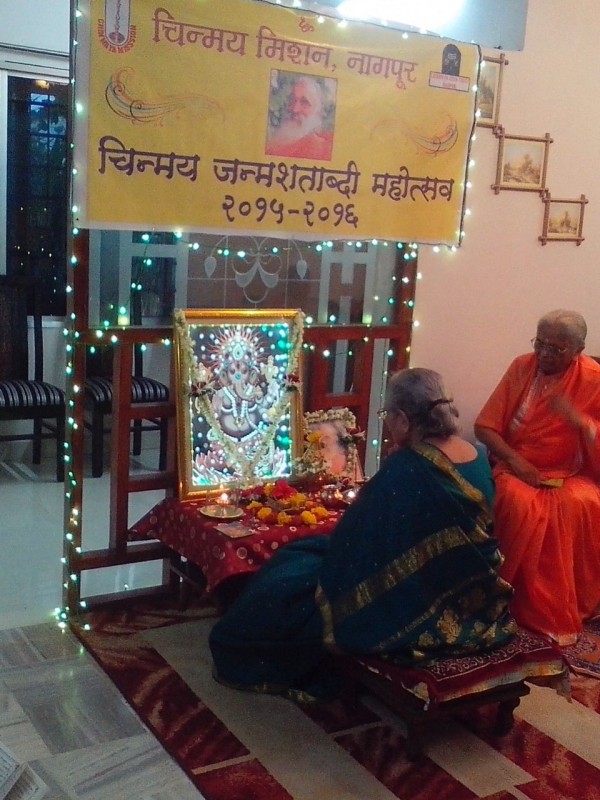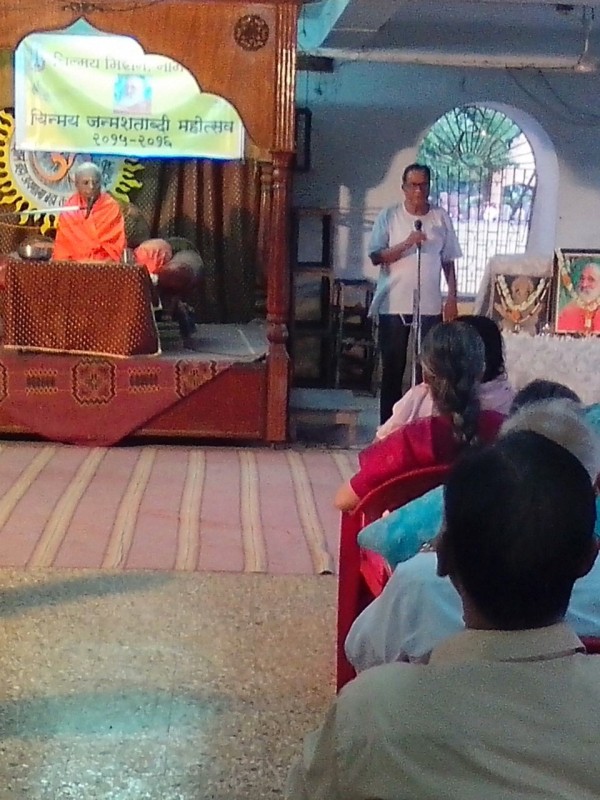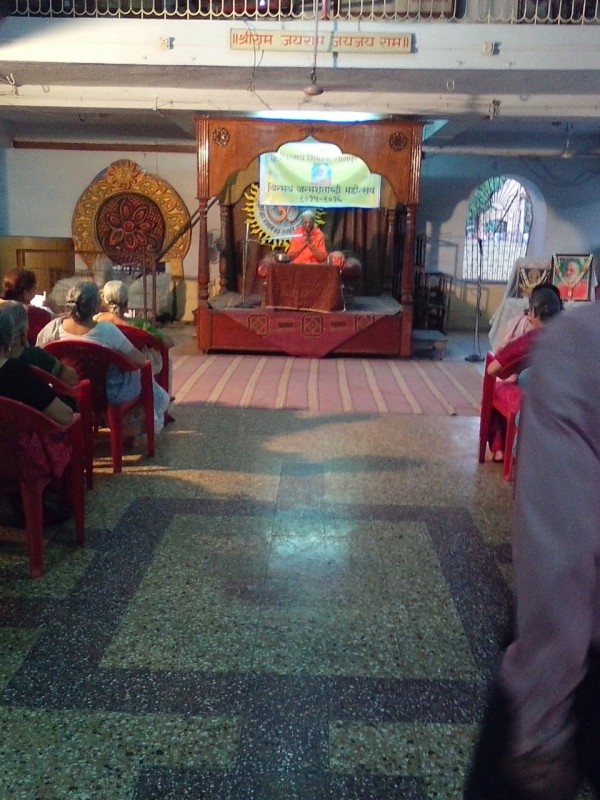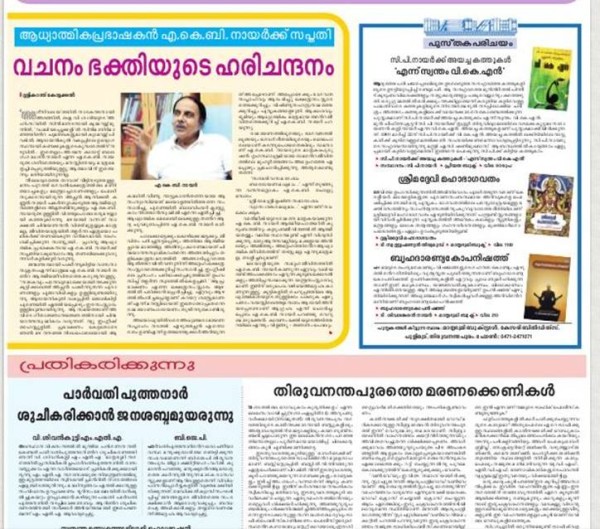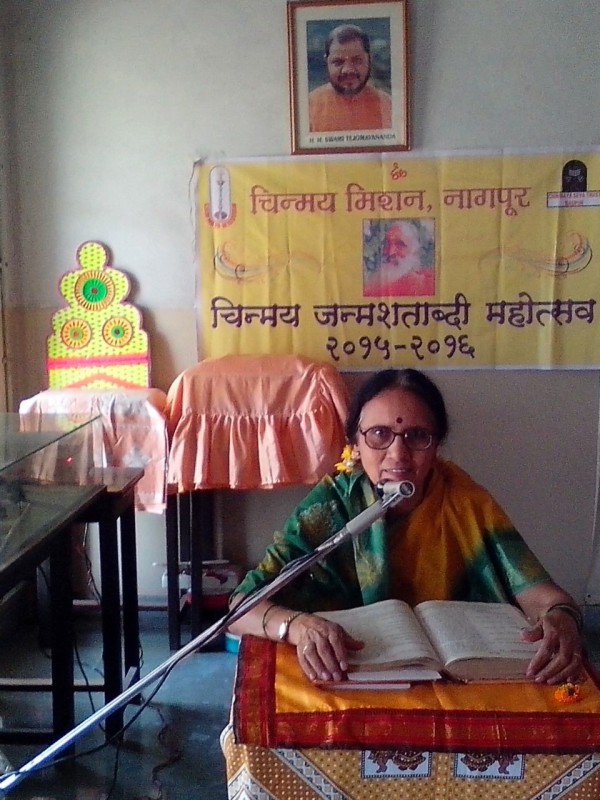Chinmaya Mission, Ahmedabad witnessed festive celebrations, Jnana Yajna, Youth Camp & Upanishad Ganga Lecture Series during March – April,2015.
Festival Celebrations
Chaitri Navaratri & Shri Ramanavami
Chinmaya Mission Ahmedabad Celebrated Chaitri Navaratri from 21st to 28th March 2015 by performing Navhaan Parayana of Shri Tulsi Ramayana. Devotees gathered in large numbers for the parayana of the holy text daily for two hours each in the morning and in the evening. Different incidents of the great Ramakatha namely Shiva-Parvati Vivaha, Ramjanma, Dhanushya Bhang, Sita Rama Vivaha, Shri Rameshwar Sthapana, Shri Rama Rajyabhishek as well as Shri Rama’s meeting with his beloved devotees such as Ahalya, Bharata, Jatayu, Kewat, Shabri, Shri Hanumanji and Vibhishana were portrayed in the temple and the yajamanas performed special arati for each of these occasions. The Satsangis revelled in the beautiful experience of singing Bhagvan Rama’s glories in different moods as beautifully presented by a great devotee Shri Tulasidasji. On the last day of Parayana, the devotees celebrated Shri Ramanavami. This day also being Shri Gangeshvar Mahadev “Sthapana Divas”, a special puja was offered in the temple. The devotees sang Kirtans and celebrated Shri Ramajanma at noon, followed by Mahaprasad.
Shri Hanuman Jayanti
On 4th April Chinmaya Mission, Ahmedabad family celebrated Shri Hanuman Jayanti. The celebrations started early morning with a grand puja of Shri Hanumanaji. The devotees also performed Shri Guru Paduka Puja in the evening followed by a musical program by Chinmaya Swaranjali of Chanting Shri Hanuman Chalisa 7 times in 7 different tunes. Devotees of all age groups participated in the chanting and felt the power of the hymn in the divine ambience of the temple.
Jnana Yajna
As a part of Pujya Gurudev’s Birth Centenary Year Celebrations, Shravana Sadhana Series of monthly Jnana Yajnas in different Areas of the city titled “Saarathino Sathvaaro” (Company of the Charioteer) have been organised successfully since march 2014.
Chapter 13 Jnana Yajna
Jnana Yajna on Chapter 13 of Shrimad Bhagvad Geeta was organised from 14 to 19 March 2015 at Global Hospital, Bopal, Ahmedabad. Many members of Global hospital family and devotees from the nearby area attended the yajna daily. After expounding on the path of single-pointed devotion for the Lord in chapter 12, from this chapter Shri Bhagvan slightly shifts the focus and leads Arjuna to a different view point for understanding the oneness of the Jeeva, the world and the Lord. By explaining the verses of this chapter, Br. Atharvana Chaitanyaji discussed how the world is divided into the Kshetra – “the field” and Kshetrajna – “the knower of the field”. The principle here is that all that which can be known as “this” is the “field” and that which is other than the field is the “knower of the field”. Therefore, the sense objects, the body, the senses, the mind, the intellect, the feelings, the thoughts, the experiences – all are nothing but a part of the field. Atharvanaji beautifully explained that it’s only the combination of these two (Kshetra+ Kshetrajna) on which the very existence of the world is based.
Ruling out the misunderstanding that there are many knower of the field, Shri Bhagvan clarifies that He, alone is the knower of all fields. This alone is the ultimate knowledge which needs to be experienced. Now, in order to experience this Truth, a guideline is provided to a seeker in the form of 20 Sadhanas which can assist him in preparing himself for gaining the highest knowledge. The devotees were inspired by the detailed discussion on these 20 lakshanas of a seeker in his journey towards the Lord. Thus purifying one’s mind, when a seeker develops the vision of oneness in all, he comes out of the sense of doership and enjoyership and attains liberation. Br. Atharvana Chaitanyaji’s simple and lucid style of explaining this profound message of the Holy Geeta was well appreciated by the novice listeners.
Chapter 14, Jnana Yajna
Jnana Yajna on Chapter 14 of Shrimad Bhagvad Geeta was organised from 11th to 16th April 2015 at Shreyas Foundation, Ahmedabad. In the lush green Yajna shala, amidst the soothing chirping of birds, a large number of devotees were benefited by Br. Atharvana Chaitanyaji talks expounding on the Guna-Traya-Vibhaga-Yoga. After differentiating between the various fields and the “knower of the fields” earlier, in this chapter, Shri Bhagvaan explains that the world that one experiences is nothing but a combination of the three Gunas – Satva, Rajas and Tamas. Citing many examples, Br. Atharvanaji explained in detail, the various effects and attributes of these Gunas. An individual identifying with the limited body, which itself is a field, acts according to one’s moods governed by the Gunas and gets bound by the cob-web of the effects of these Gunas. These gunas as the cause are not visible or perceivable directly but they can be apprehended through their various effects. For example, the effects of Satva Guna are happiness and knowledge, Action or Agitation are the effects of Rajas and Tamas is expressed as Confusion, forgetfulness or procrastination. Through a verse from Shrimad Bhagvatam, Atharvanaji explained the listeners the way of regulating these Gunas and slowly progressing from Tamas to Rajas to Satva. Since Satva Guna is necessary for gaining knowledge, a seeker is advised to direct oneself to Satva. Such a satvik and pure minded sadhaka with single-pointed devotion for the Lord, overcoming all the bondages, transcends the three gunas and attains the vision of oneness with the Lord.
M (ind) Y(our) Mind Youth Camp
On April 5 2015, Chinmaya Yuva Kendra Ahmedabad organised a one day youth Camp titled Mind Your Mind for the youth of the age group 18 to 35 years. Under the guidance of Br. Atharvana Chaitanya ji, around 20 youth explored the answers to many questions such as “What is Mind?”, “How is the mind created?”, “What is the purpose of Mind?”, “How can one control the mind?”. The campers also had the guidance of a senior mission member, Smt. Gauri Barad, who discussed about the power of one’s mind and presented various techniques to overcome one’s mental obstacles and attain success in every field through a workshop on the movie “The Secret”.
Upanishad Ganga Lecture Series VI @ AMA
The topic on the first day of the series was “I am not this”. The discussion started with a fundamental question of “What is bondage?” as asked by a disciple in the text Vivekachudamani. In the text Shri Adi Shankaracharyaji explains the student that limiting my self (Atma) to what I am not (Anatma) is bondage! Therefore, it is important to know “What I am not”(Anatma).
Since it is impossible to make a list of countless things which “I am not”, through various examples and illustrations Br. Atharvana Chaitanya Ji concluded that our scriptures provide the following principle to distinguish Anatma from Atma:
Everything which can be known as mine cannot be me. (e.g my watch is not me, my car is not me, my body is not me and so on…) Or
That which can be known as “This” (Idam) cannot be I (Aham).
Based on the above principle, my belongings or objects, my equipment such as body, mind, intellect; my conditions; my experience, perceptions – none of these is Me. This was further clear through the episode of Upanishad Ganga based on conversation of Shri Krishna-Subhadra and Savitri-yama. After identifying various layers of one’s personality as “not self”, the question is, Who am I?
On the second day of the series, Br. Atharvana Chaitanya ji explained that in principle, there are three ways of indicating something which is unknown:
1) Indication by means of negation (The “Not this” method) – In this method we negate everything other than that which is to be described and thereby point towards the unknown. Applying this method, our scriptures say that the Self is not the objects, body, mind, intellect, experiences. Meaning, it is other than the world that we perceive as “this”.
2) Indication by means of reference: Here, we take help of that which is known and with reference to that we describe the unknown. Now, adopting this method the scriptures take reference of the world that we all know and say that the Self is the very substratum or the witness of this world.
3) Indication by means of its essential nature: This method describes the unknown by its own innate quality. Our scriptures use various terms to describe our own nature some of them are – Nitya (Eternal), Shuddha (Pure), Buddha (All knowing), Mukta (Free), Sat (Existence), Chit (Consciousness), Ananda (Happiness).
In a nutshell, our scriptures declare that we are Existance-Conciousness-Bliss, now we may think, “If I am the Eternal Conscious Being or Happiness, why do I experience sorrow?” Or “How can I experience what I really am?”. Addressing this fundamental question, all our scriptures provide pointers to withdraw one’s attention from one’s false identities and show the direction towards one’s true nature. By watching the episode of Upanishad Ganga on Saint Arunagiri’s journey from lust to liberation, the listeners were inspired to learn how intelligent questioning and Self-enquiry can lead to Self-realisation irrespective of one’s current state.
